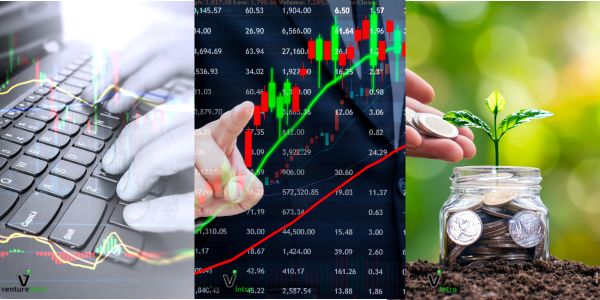
Best Investing Books
How to pick a great investing book?
Check out C-Suite Network Best Sellers List
A great investing book typically encompasses several key attributes that make it valuable, educational, and impactful for readers who want to improve their understanding of investing. Here are some characteristics that contribute to the quality of an investing book:
1. Author Expertise and Credibility
- The author should have proven experience and a strong track record in the field of investing. This could be through practical experience, academic research, or a combination of both.
2. Comprehensive Coverage
- A great investing book covers a wide range of topics relevant to the subject, providing a thorough understanding of the field. This includes fundamental concepts, different investment strategies, market analysis, and risk management.
3. Clarity and Accessibility
- The book should present information in a clear and understandable manner, making complex concepts accessible to readers with varying levels of prior knowledge. Good use of examples, case studies, and explanations helps demystify investing.
4. Practical Insights and Applications
- It should offer practical advice and actionable strategies that readers can apply to their own investing activities. Real-world examples and case studies enhance the learning experience and demonstrate the application of theoretical concepts.
5. Evidence-Based Approach
- The book should be grounded in solid research and empirical evidence, providing data and analysis to support its recommendations and conclusions. This adds to the credibility and reliability of the information presented.
6. Timelessness and Relevance
- While some investing books focus on current trends or short-term tactics, the best ones offer insights that remain relevant over time, teaching principles that can be applied in various market conditions.
7. Critical Thinking and Innovation
- A great investing book often challenges conventional wisdom and encourages readers to think critically about different aspects of investing. It may introduce innovative ideas or perspectives that provoke thought and further exploration.
8. Ethical and Responsible Investing
- It should also consider the ethical implications of investing, promoting responsible and sustainable investment practices that consider the broader impact on society and the environment.
9. Reader Reviews and Endorsements
- Positive feedback from readers and endorsements from other respected professionals in the field can be indicators of a book’s value and effectiveness.
10. Engaging Writing Style
- The book should be engaging and interesting to read, with a writing style that keeps the reader’s attention and makes the learning process enjoyable.
In summary, a great investing book is one that is informative, practical, and insightful, written by a credible author, and capable of standing the test of time. It should educate and inspire readers to make informed and ethical investment decisions.
Check out C-Suite Network Best Sellers List
Different Types of Alternative Investing?
Alternative investments refer to financial assets that do not fall into the conventional investment categories of stocks, bonds, and cash. These investments can provide diversification, hedge against market volatility, and offer potential for high returns. Here are the top 25 alternative investments:
- Real Estate: Investing in residential, commercial, or industrial properties.
- Private Equity: Investing in private companies through venture capital, buyouts, or direct investments.
- Hedge Funds: Pooled investment funds that employ different strategies to earn active returns for their investors in asset classes like technology, whisky casks, and transportation.
- Commodities: Investing in physical goods like gold, oil, agricultural products, etc.
- Private Debt: Lending money to private companies or buying their debt securities.
- Infrastructure: Investing in physical systems like transportation, utilities, and telecommunications.
- Collectibles: Investing in valuable items like art, antiques, coins, or wine.
- Real Estate Investment Trusts (REITs): Companies that own, operate, or finance income-producing real estate.
- Precious Metals: Investing in gold, silver, platinum, and other precious metals.
- Farmland/Forestry: Investing in agricultural or forested land.
- Cryptocurrency: Digital or virtual currencies that use cryptography for security.
- Peer-to-Peer Lending: Lending money to individuals or businesses through online platforms.
- Royalties: Investing in the rights to receive future payments based on the performance of an asset (like music, patents, etc.).
- Structured Products: Pre-packaged investment strategies based on derivatives and other financial instruments.
- Annuities: Financial products that provide regular payments in exchange for an initial investment.
- Art Investment: Purchasing pieces of art as a financial asset.
- Derivatives: Financial securities whose value is derived from an underlying asset or group of assets.
- Luxury Goods: Investing in high-value items like watches, jewelry, and designer fashion.
- Tax Liens: Investing in tax lien certificates issued by government municipalities.
- Distressed Debt: Buying the debt of companies that are in financial distress or bankruptcy.
- Film and Entertainment: Investing in movie productions, music projects, or other entertainment ventures.
- Renewable Energy Projects: Investing in solar, wind, hydro, or other renewable energy projects.
- Carbon Credits: Investing in certificates that represent the right to emit a certain amount of carbon dioxide or other greenhouse gases.
- Maritime Finance: Investing in shipping vessels and related infrastructure.
- Rare Books and Manuscripts: Collecting and investing in historical or rare literary works.
Investment Checklist
Scoring an investment involves evaluating its potential risks and returns using various methods. These methods help investors decide whether an investment aligns with their goals, risk tolerance, and investment strategy. Here are some common methods used to score or evaluate investments:
1. Financial Ratio Analysis
- Return on Investment (ROI): Measures the gain or loss generated on an investment relative to the amount of money invested.
- Price-to-Earnings (P/E) Ratio: Assesses the company’s current share price relative to its per-share earnings.
- Debt-to-Equity Ratio: Indicates the relative proportion of shareholder’s equity and debt used to finance a company’s assets.
2. Fundamental Analysis
- Earnings Growth: Evaluates the company’s year-over-year earnings growth to assess its profitability potential.
- Revenue Growth: Looks at the sales growth to understand the company’s market demand and operational efficiency.
- Industry Position: Assesses the company’s position within its industry, including market share and competitive advantages.
3. Technical Analysis
- Trend Analysis: Uses historical price data and charts to predict future movements based on past trends.
- Volume Analysis: Examines trading volume as an indicator of the strength or weakness of a price trend.
- Moving Averages: Analyzes the average price of a security over a specific period to smooth out price data and identify trends.
4. Quantitative Analysis
- Monte Carlo Simulation: Uses probability distributions to model and predict different outcomes for an investment’s return.
- Discounted Cash Flow (DCF): Estimates the value of an investment based on its expected future cash flows, discounted back to their present value.
5. Qualitative Analysis
- Management Quality: Evaluates the experience, track record, and leadership skills of a company’s management team.
- Brand Strength: Considers the value of the company’s brand and its impact on consumer loyalty and pricing power.
- Regulatory Environment: Assesses the impact of current and potential regulations on the company’s operations and profitability.
6. Risk Assessment
- Volatility: Measures the degree of variation in investment returns over a certain period, often using the standard deviation.
- Beta: Evaluates the sensitivity of an investment’s returns in relation to the overall market’s returns.
- Value at Risk (VaR): Estimates the maximum potential loss of an investment over a specified time frame at a certain confidence level.
7. ESG (Environmental, Social, and Governance) Criteria
- Environmental Impact: Assesses the company’s stewardship of the environment.
- Social Responsibility: Evaluates how the company manages relationships with employees, suppliers, customers, and communities.
- Governance Practices: Looks at the company’s leadership, executive pay, audits, internal controls, and shareholder rights.
Each of these methods provides a different lens through which to view an investment, and they can be used in combination to get a comprehensive picture of an investment’s potential risks and returns. The choice of method depends on the investor’s individual preferences, investment style, and the specific characteristics of the investment being evaluated.
Check out C-Suite Network Best Sellers List
- My Funded Futures - April 16, 2024
- Day Trading Books - April 3, 2024
- Four common types of changes and trends that can offer Business Opportunities? - March 24, 2024







